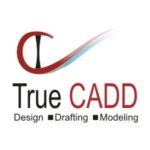Enhancing Efficiency: Artificial Lighting Modeling & Simulation
Project's Summary
Artificial Lighting Modeling and Simulation: Enhancing Efficiency in Energy Consumption
The scope of work for energy modeling and analysis in the field of artificial lighting has gained significant importance in recent years. With the rise in energy consumption and the need for sustainable practices, architects and designers are increasingly relying on energy simulations to optimize lighting systems. This article aims to discuss the key aspects of a recent project undertaken by the renowned architectural studio, TrueCADD, focusing on artificial lighting modeling and simulation.
The project began with the collection of 2D drawings in PDF format from the client. These drawings served as the primary input for the energy modeling and analysis process. TrueCADD's team meticulously studied the details of luminaries and fixtures provided by the client, ensuring accurate representation in the subsequent 3D model. This 3D model formed the basis for the energy simulation and analysis phase.
Utilizing advanced software tools and techniques, TrueCADD successfully executed the energy simulation and analysis of the artificial lighting system. The primary objective was to assess and optimize energy consumption. By considering various parameters, such as lighting intensity, fixture placement, and energy efficiency, the team generated valuable insights into the lighting design's performance. These insights were subsequently used to fine-tune the design, ensuring optimal energy consumption and enhanced lighting efficiency.
It is worth noting that the modeling and analysis process heavily relied on the electrical design and data provided by the client. TrueCADD's team worked closely with the client to incorporate their requirements and suggestions. The selection of fixtures and luminaries was done in accordance with the client's preferences, ensuring a seamless integration of their vision into the final design.
In summary, the artificial lighting modeling and simulation project undertaken by TrueCADD exemplifies the studio's commitment to sustainable design practices. Through the use of advanced software tools and techniques, the team successfully created a 3D model of the lighting system, followed by an energy simulation and analysis. By optimizing energy consumption and enhancing lighting efficiency, TrueCADD's expertise in this field contributes to the creation of environmentally friendly and energy-efficient architectural designs.
Read also about the Revolutionize Middle School Science Education with Innovative Science Classroom Design project

